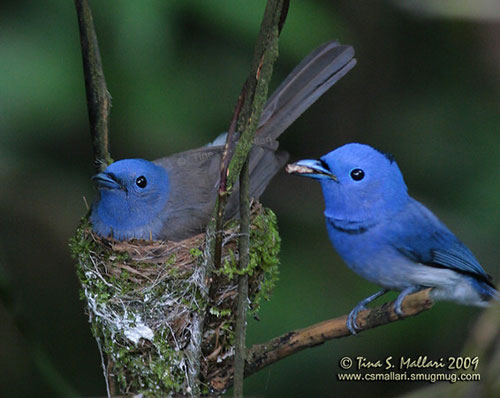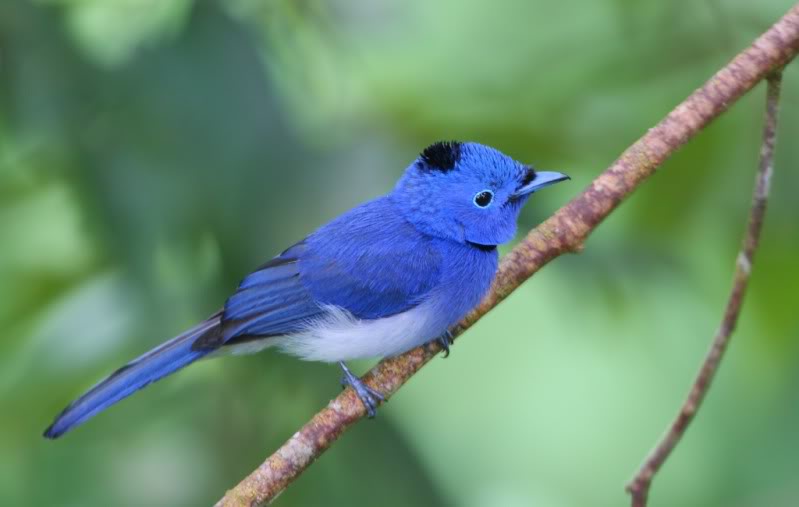
Hypothymis azurea
TAXONOMY
Muscicapa coeruleocephala Sykes, 1832, Decan, India. 19 subspecies
recognized.
OTHER COMMON NAMES
English: Pacific monarch; French: Tchitrec azurй; German:
Schwarzgenickschnдpper; Spanish: Monarca Azul de Nuca
Negra.
PHYSICAL CHARACTERISTICS
6 in (16 cm). Long-tailed, slender. Similar in shape to fantails,
but coloration is bolder. Males bright blue, with black patch on
nape and black band on throat. Females grayer, lack black
markings.
DISTRIBUTION
From India in the west, across southern Asia to southern
China and the island groups of Hainan, Taiwan, Sundas,
Philippines, Andamans, and Nicobars.
HABITAT
Common in scrub, forest and overgrown plantations, mostly in
the lowlands, but up to 4,265 ft (1,300 m) in some areas. Birds
tend to be found in the medium or lower canopy, but nests can
be close to the ground.
BEHAVIOR
Vocal and showy, with harsh, chirping call and rattling trill
or whistle, which is easily attracted to an imitation. Outside
breeding season, pairs rove widely, often joining with other
Black-naped monarchs or other species to form small flocks.
FEEDING ECOLOGY AND DIET
Feed on variety of small insects, including small crickets, butterflies,
and moths, mostly by gleaning from foliage, but also
by snatching from mid-air.
REPRODUCTIVE BIOLOGY
Nest is deep cup woven of thin strips of bark, plant fibers,
moss, and spider webs, wedged in the upright fork of a tree,
sometimes just a few feet above the ground. Females lay two or
three buff- or cream-colored eggs, with red-brown spots. During
breeding season, usually in the first half of the year, males
defend territory from intrusion by conspecifics.
CONSERVATION STATUS
Common and widespread in a range of habitats.
SIGNIFICANCE TO HUMANS
None known.
Other popular Animals
Photo Gallery of - Black-naped monarch




 Animalia Life
Animalia Life